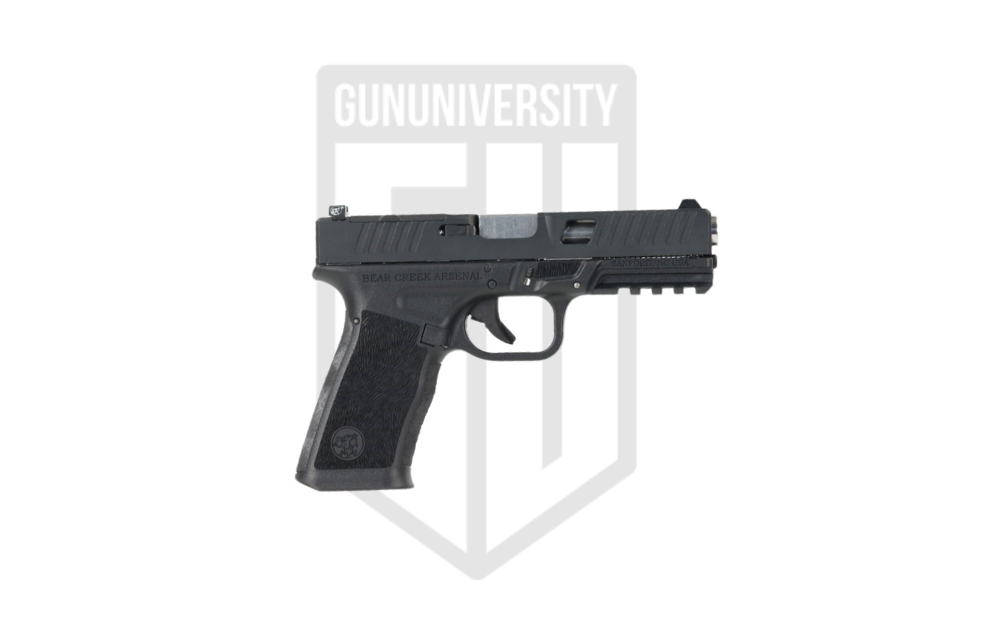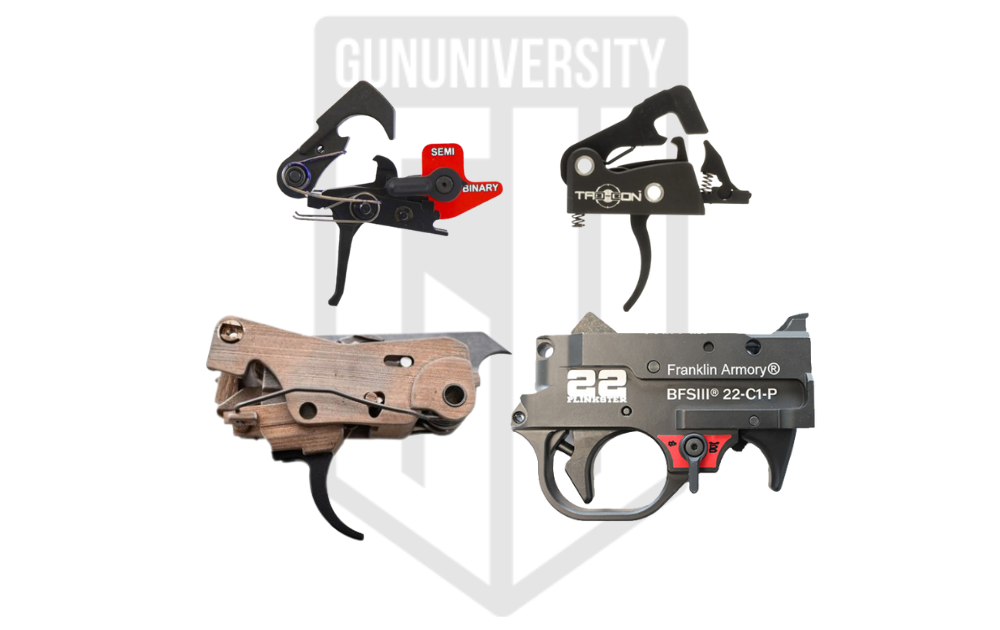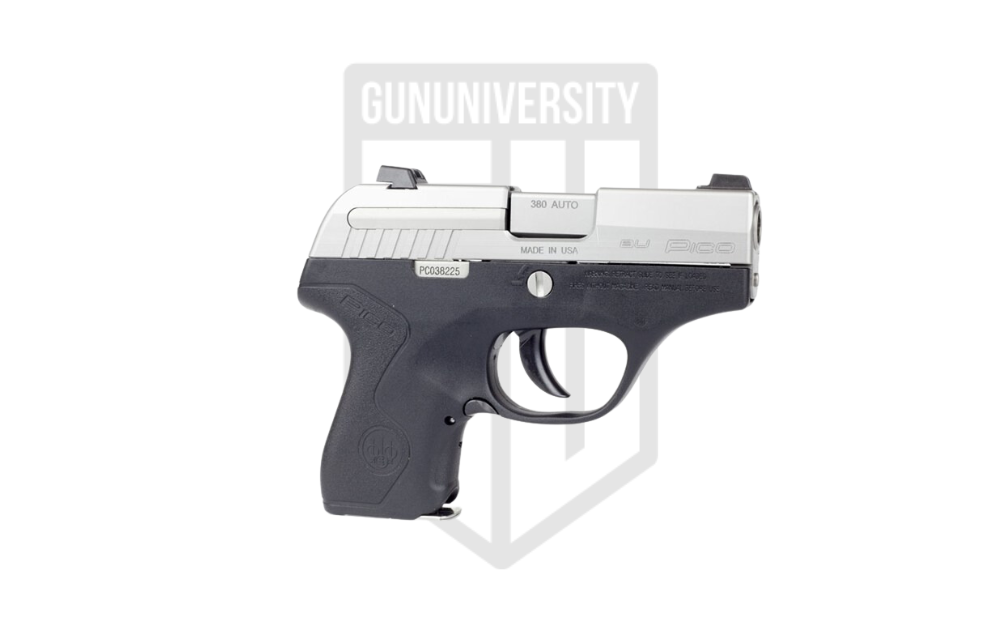7 Best Rifle Sling + Buyers Guide
Having the right rifle sling can make a world of difference in how you handle long guns. It offers numerous benefits tailored to the type of shooting you’re engaged in, be it hunting, tactical operations, competitive shooting, or just practicing at the range. However, with countless options on the market, selecting the ideal one can feel overwhelming. But don’t worry, in this article, I’ve gathered the 7 best rifle sling to assist you in confidently selecting the perfect option for your needs. So, Let’s dive in and see which sling best suits you.
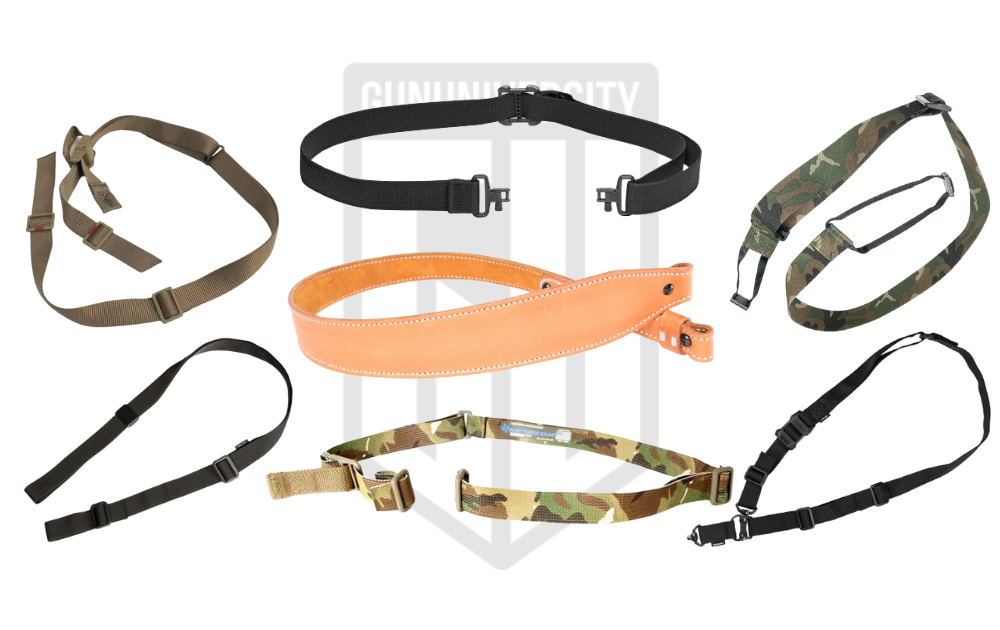
What Is a Rifle Sling?
A rifle sling is essentially a strap that you attach to your gun, providing a handy way to carry it around. However, it’s more than just a strap. It offers hands-free convenience for navigating terrain and obstacles, aiding in climbing, and even helping you carry game or injured individuals. Plus, when adjusted properly, a sling can enhance your shooting accuracy and stability, whether you’re in a competitive match or a tactical situation. Let’s not forget the practical side: a sling can prevent accidental drops and deter theft by securely fastening your weapon to your body.
Now, this article covers slings for all types of rifles. If you are looking for a sling for an AR-15 style rifle, we have an articles dedicated to it here.
How I Chose the Best Rifle Slings
As a former Marine, I’ve had the opportunity to test a wide variety of rifle slings over the years, some of which were kindly sent by manufacturers. In the process of compiling this article, I reflected on my personal experiences and also reached out to some industry experts for their insights. They shared their thoughts and favorite models, which helped me curate a list of what I believe are the best rifle slings.
It’s important to remember that not all rifle slings are created equal, and there’s no universal standard for comparing them. Preferences for rifle slings can be quite personal, so what’s perfect for me might not be ideal for you. That’s why, instead of ranking the rifle slings, I’ve selected the ones that are the best in each category. So, without further ado, let’s dive into the list.
Gun University’s Choices of the Best Rifle Slings
Best Rifle Slings
Best Budget Magpul RLS Rifleman Loop | 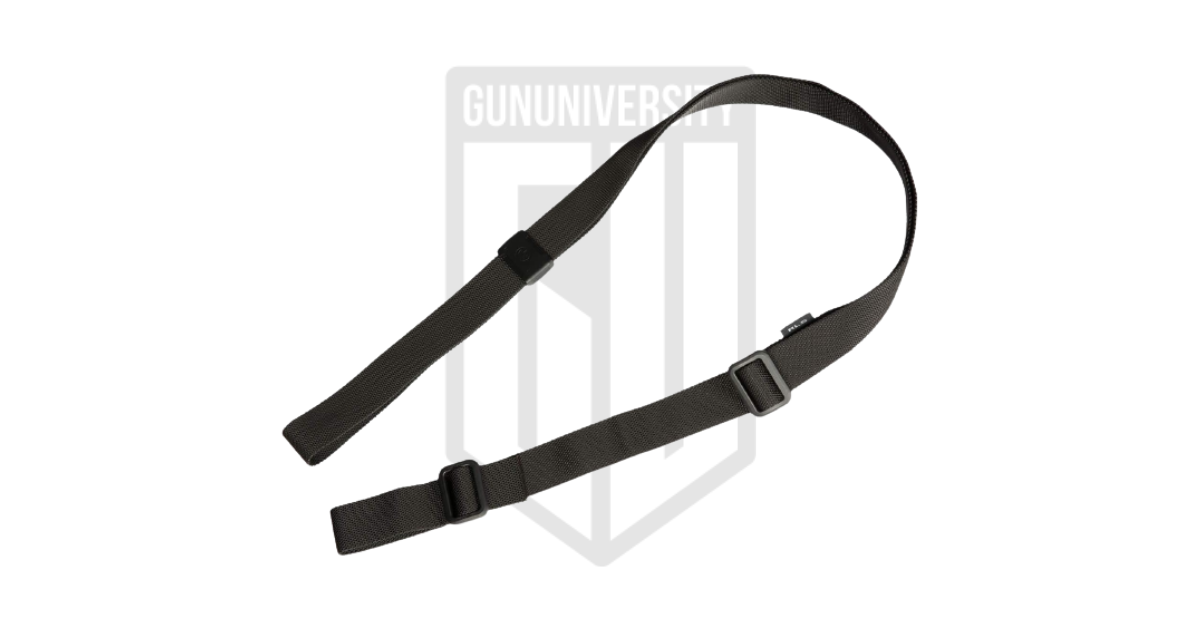 |
| Buy on Amazon |
Best Leather Diamond D Leather, Leather Rifle Sling | 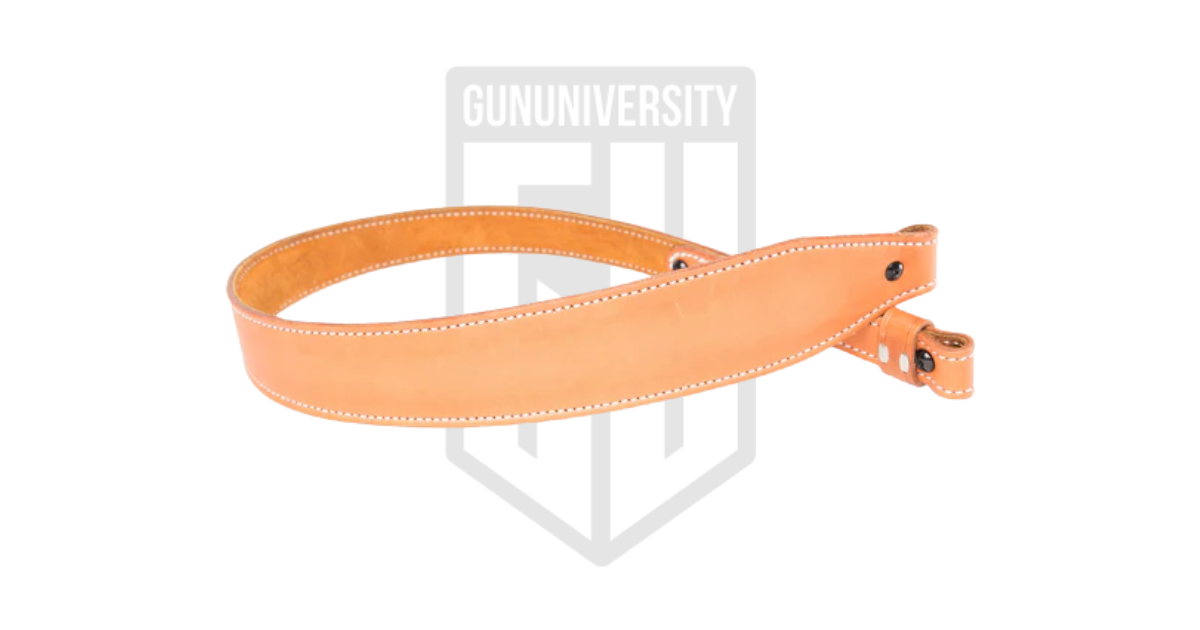 |
| Buy on Amazon |
Best for AR-15 Arbor Arms Dual Adjust Weapon Sling | 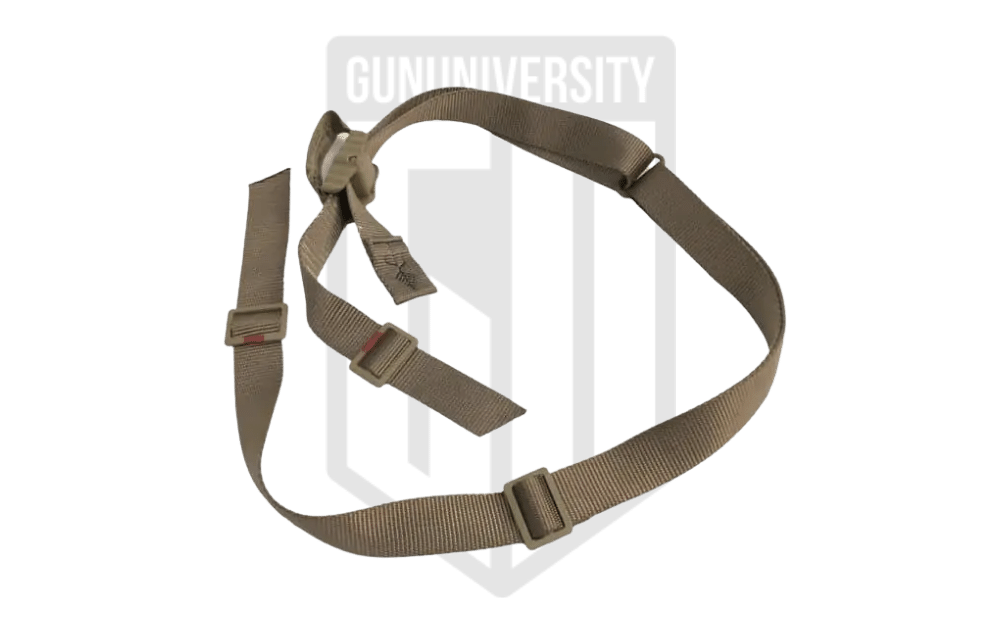 |
| Check Price |
Best Modular Magpul MS4 |  |
| Check Price |
Best for Modern Hunting Blue Force Gear Hunting Sling | 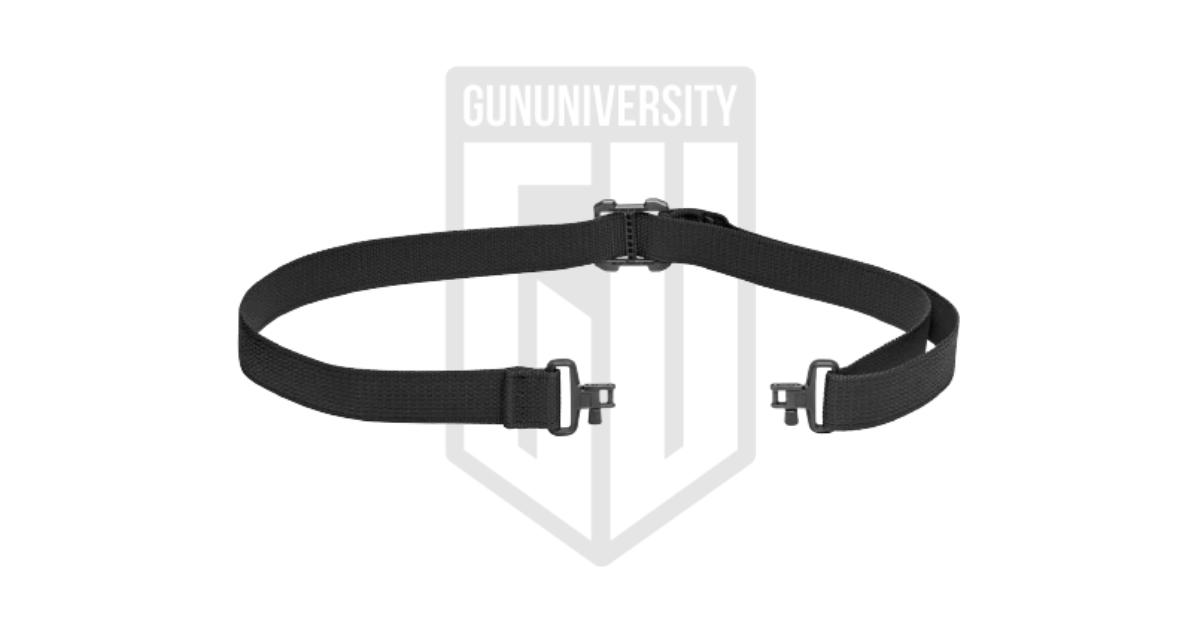 |
| Buy on Amazon |
Best Tactical Blue Force Gear Vickers Sling | 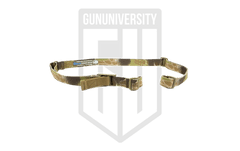 |
| Buy on Amazon |
Best Heavy Duty The Boonie Packer Safari Sling | 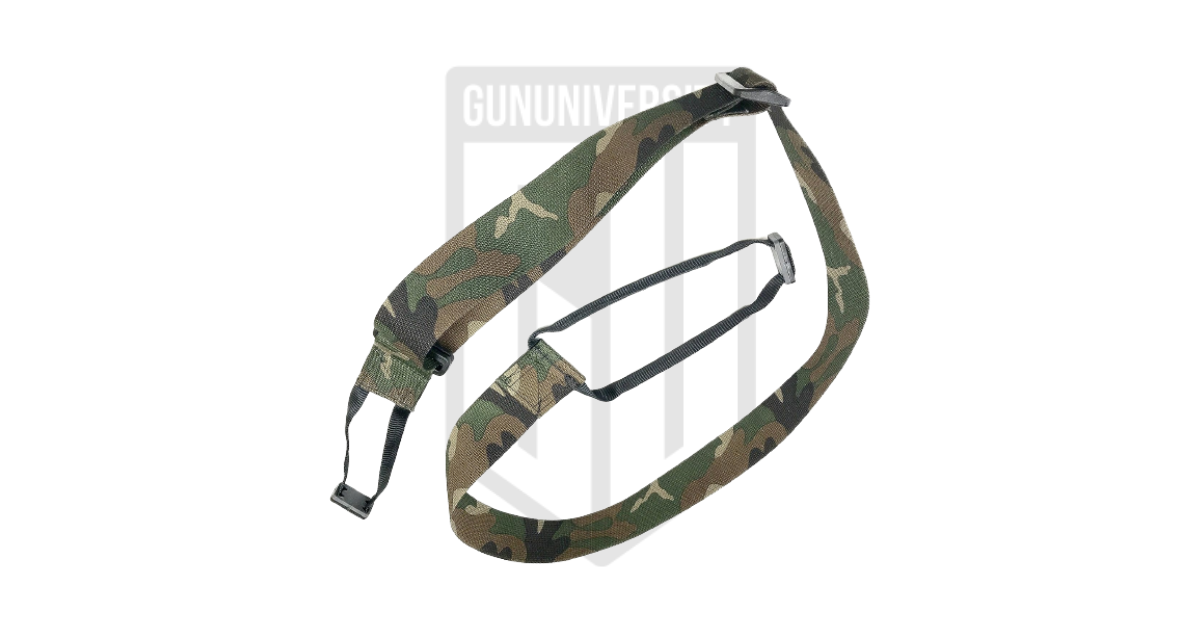 |
| Buy on Amazon |
Best Rifle Slings Specifications
Below is a table of the specs for each sling. Click the name of the item to jump to that review.
| Sling | Points | Material | Width (in) |
|---|---|---|---|
| Magpul RLS Rifleman Loop | 2 | Nylon Mesh Webbing | 1.25 |
| Diamond D Leather Leather Rifle Sling | 2 | Leather | 1+ |
| Arbor Arms Dual Adjust Weapon Sling | 2 | Webbing | 1.25 |
| Magpul MS4 | 1 or 2 | Nylon Mesh Webbing | 1.25 |
| Blue Force Gear Hunting Sling | 2 | Cordura Webbing | 1.25 |
| Blue Force Gear Vickers Sling | 2 | Cordura Webbing | 1.25 |
| The Boonie Packer Safari Sling | 2 | Webbing | 2 |
Best Rifle Slings
Here is our list for the best rifle slings:
- Magpul RLS Rifleman Loop
- Diamond D Leather Leather Rifle Sling
- Arbor Arms Dual Adjust Weapon Sling
- Magpul MS4
- Blue Force Gear Hunting Sling
- Blue Force Gear Vickers Sling
- The Boonie Packer Safari Sling
Best Rifle Slings – Reviews
Best Budget Magpul RLS Rifleman Sling
Magpul RLS Rifleman Sling
A lightweight and affordable sling made from 1-1/4in nylon mesh webbing.
Magpul RLS Rifleman Loop Specs
- Points 2
- Material Nylon Mesh Webbing
- Width 1.25 in
Magpul RLS Rifleman Loop Review
If you want to spend less than 30 bucks and still get a good sling, then the Magpul Rifleman’s Loop is for you. It’s as simple as it gets, and it’s aimed at a wide variety of rifles, but more specifically at rifles used for hunting. The rifle uses modern materials and attachment methods that come from the Magpul tactical series of MS slings. This includes their proprietary nylon and polymer hardware.
A loop sling is a specific shooting sling. If you ever served in the Marine Corps, you might have used one a time or two. It’s a means to set up a sling to provide the most stability possible. The Magpul RLS Rifleman Loop Sling comes with a rifleman’s loop built into it. You run your support arm through the loop to create instant tension to help stabilize your position. This tension makes aiming easier and makes accurate shooting easier.
The Rifleman Loop Sling combines both the Rhodesian sling design with the classic 1907 match slings. This brings us a modern but stable sling. With traditional slings setting up a rifleman’s loop takes some time. With the Magpul RLS, you can flow right into it with ease. It has a great sling design, and like most Magpul products, it’s made to last.
Magpul RLS Rifleman Loop Pros and Cons
- Affordable
- Well Made
- Aids In Accuracy
- No Quick Adjustment
Best Leather Diamond D Leather, Leather Rifle Sling
Diamond D Leather, Leather Rifle Sling
A customizable leather sling with a very classic look.
Diamond D Leather Rifle Sling Specs
- Points 2
- Material Leather
- Width 1+ in
Diamond D Leather Rifle Sling Review
The ancient art of leatherworking will seemingly never fade away. In a day and age of space-age materials, awesome nylons, meshes, and more, leather still has its place. In rifle slings, it’s easy to see why some would appreciate the classic leather rifle sling. If you want a leather sling, you want a good one, and it’s tough to get better than Diamond D Leather.
The Diamond D Leather sling is a classic two-point design that’s adjustable for length via Chicago screws. The top of the sling has a Cobra-like flare which helps support the weight of the rifle as it’s carried over the shoulder. There is nothing tactical about this thing. It’s a simple strap designed to help carry the weapon and nothing more.
While it’s remarkably old school, it certainly has its charm. A tactical sling just doesn’t look right on my Marlin 336 rifle. A good leather sling looks and functions well. Good leather work isn’t cheap, but at around 60 bucks for the base model, the Diamond D Leather, leather rifle sling won’t drain your wallet. You can go fancier, add basket weave, stamps, and even your initials if you like things fancy.
Diamond D Leather Rifle Sling Pros and Cons
- Supportive
- Extremely Well Made
- Adjustable
- Lacks Modern Sling Tech
Arbor Arms Dual Adjust Weapon Sling Specs
- Points 2
- Material Webbing
- Width 1.25 in
Arbor Arms Dual Adjust Weapon Sling Review
My all-time favorite rifle sling is the Arbor Arms Dual Adjust Weapon Sling. It’s a modern tactical two-point that’s designed by a Recon Marine who knows a thing or two about slings and other soft goods. With the Arbor Arms Dual Adjust Weapon Sling, you can adjust both the rear and front portions of the rifle sling rapidly.
These adjustments allow for a significant amount of instant adjustment to ensure the sling is exactly where you need it to be. This allows more control and customization over the sling while eliminating the tail. This helps you keep the sling ready for whatever situation you may have at hand. Outside of the dual adjust design, the Arbor Arms sling uses a textile blend that never stiffens or hardens. It’s rugged, well-made, and easy to adjust and secure.
The quick adjust front grab adds both a loop and a tab so it can be easily engaged and quickly adjusted. Users can add a pad if need be. There is also a precision version that allows you to attach the sling to your belt to create tension and more stability to your shooting position. Arbor Arms is leading the way in sling innovation, and Dual Adjust Weapon Sling is a fantastic option for modern rifles like the AR-15.
Arbor Arms Dual Adjust Weapon Sling Pros and Cons
- Endlessly Adjustable
- Extremely Well Made
- Easy to Size and Adjust
- None
Best Modular Magpul MS4 QDM Sling
Magpul MS4 QDM Sling
A lightweight modular sling with quick detachment points made from 1-1/4in nylon mesh webbing.
Magpul MS3 (or MS4) Specs
- Points 1 or 2
- Material Nylon Mesh Webbing
- Width 1.25 in
Magpul MS3 (or MS4) Review
The Magpul MS3 started life as a modern tactical two-point. It’s no different from most modern slings. Magpul uses its famed polymer mix to provide durable but also affordable and lightweight hardware to the MS series. Additionally, the sling has a rapid adjustment slider that allows you to easily loosen or tighten the sling on the fly. While that all seems standard, what makes the MS3 different, and by extension the MS4, is its ability to convert from a two-point to a one-point.
The Magpul MS3 (and MS4) allow the user to quickly and efficiently remove the front end of the sling and clip it to the rear end. This instantly turns the MS3 into a single-point sling. It’s quite handy when working corners and barriers, as well as moving shoulders and moving in and out of vehicles. The MS3 makes life easy to maneuver and allows you to focus on the task at hand instead of focusing on dealing with your sling.
Outside of that one big feature, the Magpul MS series are very well-made slings. They allow for easy use and adjustment. They are quite wide and very supportive. The slider is snag free but still easy to use, even when gloved. The Magpul MS3 and MS4 only differ in their attachment methods. One uses clips, and the other uses QD-type align swivels.
Magpul MS3 (or MS4) Pros and Cons
- Modular
- Well Made
- Easy to Adjust
- Limited Hardware Options
Best Modern Hunter Blue Force Gear Hunting Sling
Blue Force Gear Hunting Sling
A simple 2 point sling made from 1-1/4in Cordura webbing.
Blue Force Gear Hunting Sling Specs
- Points 2
- Material Cordura Webbing
- Width 1.25 in
Blue Force Gear Hunting Sling Review
We mostly know Blue Force Gear for its tactical gear. They make chest rigs, plate carriers, and tactical slings. The BFG Hunting sling stands out as a pleasant surprise among other slings, offering hunters a blend of traditional design with modern features worth noting. It has a is a simple two-point design that comes with sling swivels pre-installed and ready for mounting to nearly any type of rifle. These only work on traditional sling swivels, unfortunately.
Pairing a set of high-quality sling swivels, with a high quality for less than fifty bucks, is pretty dang solid. They make the BFG Hunting Sling with the same care and quality as the BFG tactical slings. It’s highly adjustable, from 46 to 26 inches, with relative ease. The materials are top-notch and will certainly suffer the punishment of fall deer season.
Much like their tactical slings, the Hunting Sling allows for rapid adjustment. You can very easily tighten and adjust the sling on demand. We don’t have a tab, but a lower profile slider that makes it easy to adjust without sticking out too far. It’s made to be simple, quiet, and durable. What more do you need?
Blue Force Gear Hunting Sling Pros and Cons
- Affordable
- Durable
- Easy to Adjust
- Fixed Hardware
Blue Force Gear Vickers Sling Specs
- Points 2
- Material Cordura Webbing
- Width 1.25 in
Blue Force Gear Vickers Sling Review
If you want what’s likely the most proven tactical sling on the planet, the Blue Force Gear Vickers sling is it. Larry Vickers, a Delta Force commando, designed the BFG Vickers sling, which is now widely used by the US Marine Corps and Air Force Security Forces. The military has issued over 300,000 to its members.
The Blue Force Gear Vickers sling features a rugged CORDURA that’s extremely durable and won’t roll, crack, or snap under pressure. The quick adjustment tab is big, wide, and easy to grab and pull. BFG makes a ton of sling hardware to make it easy to mount the sling anywhere you want it. You can rig a BFG sling up to an AR, an AK, a G3, a hunting rifle, or a lever gun, and it’ll work without issue.
One of the standout features of the Vickers Sling is its compatibility with the Quick Release Kit. This kit, which can be purchased separately, adds an emergency release buckle onto the sling, providing a swift and efficient way to release your weapon when needed. This feature enhances the sling’s functionality, making it even more versatile and user-friendly.
Overall, this was the modern tactical two-point that started it all. It’s become extremely popular with variations with integrated pads, models made for specific platforms, lightweight options, and even job-specific slings like the Medic. If you need it, Blue Force Gear likely makes it.
Blue Force Gear Vickers Sling Pros and Cons
- Easy to Adjust
- Numerous Variations
- Tons of Hardware Available
- Get’s Slightly Stiff Over Time
Best Heavy Duty Boonie Packer Safari Sling
Boonie Packer Safari-Tac Sling Specs
- Points 2
- Material Webbing
- Width 2 in
Boonie Packer Safari-Tac Sling Review
The Boonie Packer Safari Sling is an affordable sling design, and by the name, it’s easy to guess what the purpose is. It’s a hunting sling! Specifically, a sling is designed to allow you to carry your weapon in a quasi-ready position while moving through the brush. It’s quick and easy to snap from your binoculars to your rifle for a quick and easy shot.
This sling attaches to a traditional buttstock in a rather neat way. It allows the gun to be carried in a tactical manner without having to deal with the traditional rifle sling swivel. The mounting method makes it easy for the rifle to stay flat against your body and comfortable to carry. Like a modern tactical sling, you get a slider to allow for easy adjustments.
It’s not exactly a quick-adjust design, but it doesn’t require you to remove the sling from the rifle. The Safari Sling works with all manner of traditional rifles and even shotguns. This provides you with a simple but versatile hunting sling that won’t break the bank either.
Boonie Packer Safari-Tac Sling Pros and Cons
- Easy to Adjust
- Hands-Free Hunting Option
- Affordable
- Limited In Rifle Compatibility
Best Rifle Slings – Buyers Guide
If you’re in the market for a rifle sling, there are several factors to consider to make sure you choose the best option for your needs. Here’s a comprehensive buyer’s guide I’ve compiled to assist you in making a well-informed decision when selecting the best sling for your rifle.
Factors To Consider When Buying a Rifle Sling
Identify Your Use Case: Determine how you primarily intend to use the rifle sling. Are you a hunter, competitive shooter, or tactical enthusiast? Different slings are designed with specific purposes in mind, so understand your use case and choose a rifle sling accordingly.
Type of Sling: Consider the different types of slings available based on your preferences and intended use. There are three main types to consider.
- Single-Point Sling -This one’s all about quick moves and flexibility. It lets your rifle hang loose for fast grabs, perfect for when you need to switch positions in a hurry. People often use it in fast-paced shooting situations or when they’re in tight spots where every second counts.
- Two-Point Sling – It’s a classic choice for stability and flexibility. It gives you lots of options for how to carry your rifle and how to position yourself when you’re shooting. Perfect for hunting trips, tactical missions, or just general rifle use.
- Three-Point Sling – This one’s like the middle ground between the single-point and two-point slings. It gives you stability like the two-point, but also lets you move around freely like the single-point. Plus, it’s got an extra strap that wraps around you, so you feel super secure and in control of your rifle. It’s great for when you need to go hands-free but still want to keep your rifle close by.
Length: Consider the sling length in relation to both your body size and the type of rifle you’re using. A sling that’s perfect for an AR-15 might not be right for a bigger precision rifle. Make sure the sling’s length matches your body size and the size of your firearm for the best fit and comfort.
Sling Hardware: You’ll want to examine what hardware you need to attach the sling to your rifle. Most use simple sling swivels, and modern rifles and rail systems allow for QD ports if desired. Other guns, like the AK, may benefit from loop-style attachments. The famed HK hoops are another popular way to attach a sling. Your sling and weapon need to gel well with how you plan to attach it.
Consider Material Durability: Look for slings made from high-quality materials like nylon, leather, or Cordura webbing. Ensure the material is durable enough to withstand rugged outdoor conditions and frequent use without compromising comfort.
Ease of Adjustment: Opt for slings with quick and easy adjustment mechanisms. The ability to adjust the length of the sling swiftly allows for on-the-fly customization according to your shooting position or carrying preferences.
Padding and Width: Pay attention to the width and padding of the sling, especially if you’ll be carrying your rifle for extended periods. A wider and padded sling helps distribute the weight more evenly, reducing fatigue and discomfort.
Check Rifle Compatibility: Make sure the sling is compatible with your rifle’s attachment points or mounting system. Some slings come with universal adapters or swivels, while others may require specific hardware for installation.
Balance Cost and Quality: Determine your budget and find a sling that offers the best value for money without compromising on quality and essential features. Remember that investing in a durable and reliable sling can pay off in the long run.
Slung Out
Slings are one of the most affordable accessories on the rifle accessory market. It’s quite nice to have and can be a multi-purpose tool for your rifle. Like most things guns these days, there are options for everyone. Hopefully, we’ve provided a diverse selection of slings that can be a game changer for your specific purpose. I also hope that we’ve helped you learn how to wear it.
Best Rifle Sling – FAQs
Are rifle slings adjustable?
Yes, most rifle slings let you adjust the length to fit your body size, shooting style, and how you like to carry your rifle. Look for slings with easy adjustment features so you can customize it on the spot without compromising stability or security.
Can you use the same rifle sling for different types of rifles?
While some slings are made to work with different types of rifles, it’s important for you to make sure the sling you pick fits the specific guns you have. Consider factors such as attachment points, sling length, and compatibility with different rifle configurations to determine if a sling can be used across multiple firearms.
Can you personalize or customize a rifle sling?
Some manufacturers give you the options for personalization or customization, such as adding initials, custom stitching, or selecting specific colors or patterns. Plus, with aftermarket accessories like sling pads or attachments, you can really make your sling fit your own style and shooting preferences.
Do rifle slings affect shooting accuracy?
When properly adjusted and used, rifle slings can improve shooting accuracy and stability by providing support and reducing shooter fatigue. Experiment with different sling positions and adjustments to find what works best for you.
Recent Posts
July 27, 2024
July 26, 2024
July 25, 2024

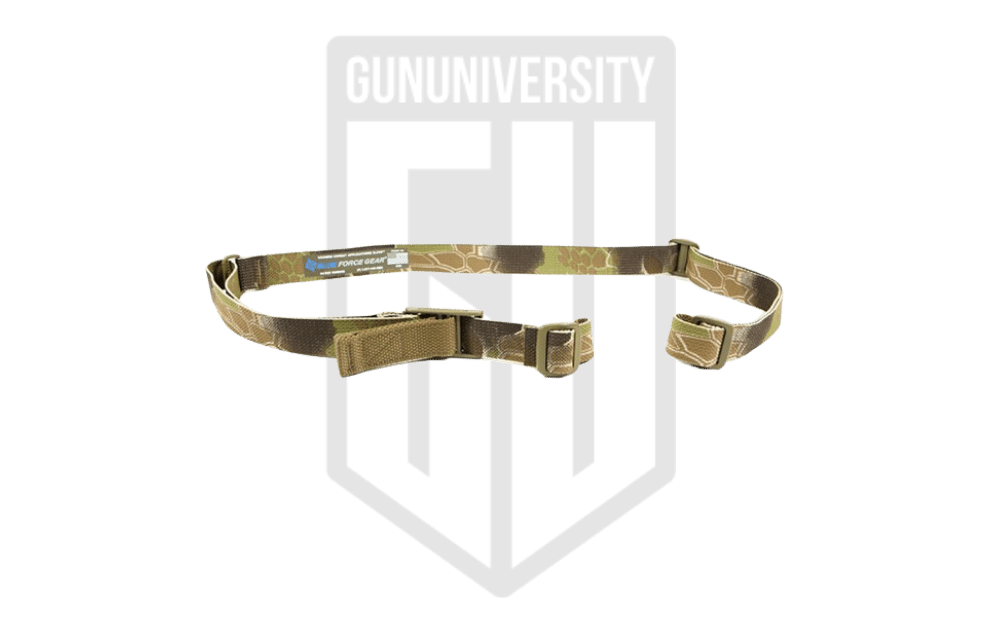
![The Best Shooting Ear Protection in 2024 [Tested]](https://gununiversity.com/wp-content/uploads/2021/09/best-shooting-hearing-protection.jpg)
